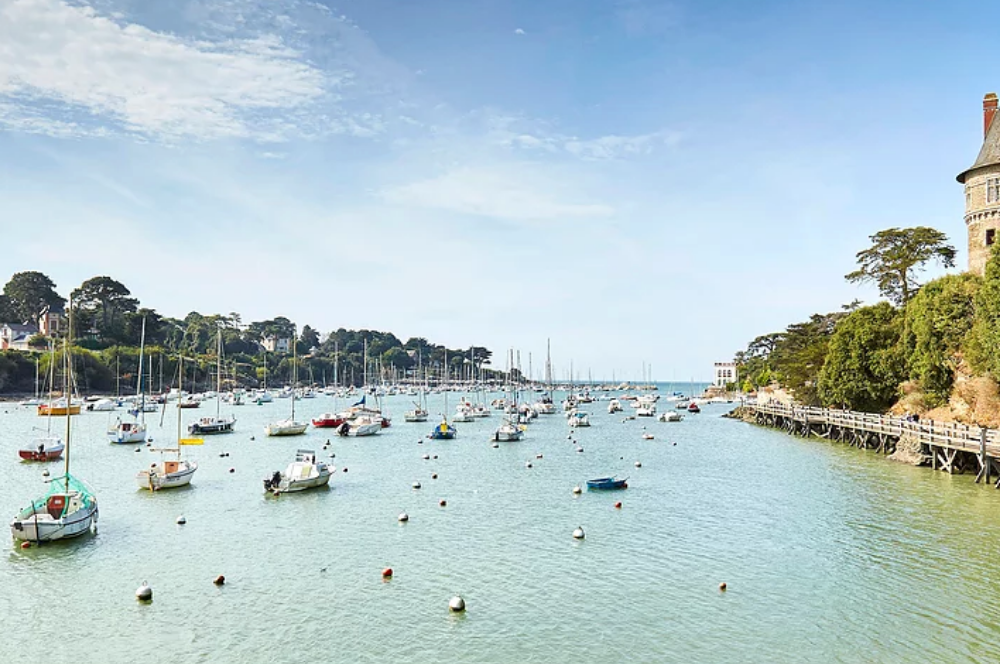At PENTICTON, our love of the Loire Valley runs as deep as the river itself
A winemaking region which meanders from the heart of France to the Atlantic coast, the Loire valley offers a myriad of different wines to discover. As a result of the expansive nature and topography of the river, the vineyards of the Loire are enriched by a compilation of different soils and climates. The northernly wine region benefits from a mix of oceanic, continental and micro climates, bringing richness and complexity to its wines, whilst simultaneously maintaining a refreshingly delicious and bright acidity, perfect for spring and summer, if not the whole year round!
1. Terroir, 4 regions in 1

Source: http://loirevalleywine.com
The term “terroir” does not merely indicate the soil type a vine is planted on. While “terroir” does indeed pertain to the topography of a landscape, it also encapsulates the climate and even the savoir-faire of the winemaker. It can become a source of debate around the world of wine, as it is this combination of ingredients which gives a wine its individuality.
The Loire Valley vineyard is expansive and varied, however it has been helpfully organised into four different areas: 1) Pays Nantais, 2) Anjou and Saumur, 3) Touraine, 4) Central Loire.
As you follow the progression of the vineyard from west to east, you can see how the climate gradually shifts from oceanic to continental. The soil itself is equally varied. The west of the vineyard, around the city of Nantes, lies on a bed of schist, gneiss and granite. This then become slate and sandstone in Anjou, and finally (tuffeau) limestone, clay and sand past Touraine and into Central Loire. All of these components are what allows the Loire Valley to make some of the world’s most signature wines.
2. What’s an AOC/AOP?

Photo courtesy : http://loirevalleywine.com
Appellation d’Origine Controllé/Protége is delineated geographical zone, stipulating that only products made within that zone and according to certain rules, can claim their name to that area. For example, only sparkling wines made within the Champagne region, using the Champagne method, can be called Champagne. A winemaker may choose to ignore the rules and instead of adopting the name of a specific AOC, can instead take the category of Vin de France. The Loire Valley itself has 85 individual AOC’s. Some are very small and niche and others are famous world wide.
3. Varied Varietals
There are numerous different grape varieties planted around France, however some suit better climates and soils than others. It is important to note that if a winemaker wants to produce a wine under a specific AOC, then they must follow the rules. This includes planting the correct grape varietal. Across the AOCs of the Loire, there are a handful of different varietals permitted.
- The Pays Nantais: is most famous for AOC Muscadet and AOC Muscadet Sèvre et Maine. The only varietal planted in the Pays Nantais is Melon de Bourgogne, sometimes also called Muscadet. Influenced by thrashing Atlantic coast, this bone-dry, slightly floral, refreshing white wine is a classic pairing with Normandy Oysters. *Note: Not to be confused with Muscat a varietal with a sweeter and fruitier profile.
- Anjou/Saumur: The main varietals are Cabernet Franc, and Gamay creating both sultry and fruit-forward reds. Chenin is grown to produce dry, off-dry and even sweet whites. Famous AOCs include AOC Anjou, AOC Saumur, AOC Savennières and AOC Coteaux du Layon (only sweet wines). The mirco-climates around Coteaux du Layon create the perfect conditions for the occurrence nobel rot (botrytis cinerea). It might not sound appetising, however this magical transformation makes some of the most complex, intense and delicious sweet wines in France.
- Touraine: The grapes start to diversify as we move into the Touriane area, welcoming back Cabernet Franc and Gamay, as well as Cot for the reds, and Chenin and Sauvignon blanc for the whites. Popular AOCs are the aromatic and dense AOC Bourgueil, the deep and spicy AOC Chinon, and the very versatile AOC Equally famous for its noble rot, Vouvray produces both still and sparkling sweet wines made from chenin. However, Vouvray Sec also exists producing dry yet voluptuous white wines.
- Central Loire: The star varietals here are Pinot Noir and Gamay, producing delicate and effortless reds, and Sauvignon blanc for those lip-smacking, zingy whites, such as AOC Pouilly-fumé. At PENTICTON, we are serious about AOC Sancerre. Probably the most famous AOC in the Loire valley, Sancerre produces red, white, and rosé wines. While the reds are unassuming and delicate, it is the vibrant and iconic white Sancerre which tends to take the centre stage.
4. Stir the lees

Source: PENTICTON
When coming across a bottle of AOC Muscadet, you might have noticed the words “Sur Lie” on the label. The Lees or Lies in French, are the remnants of dead yeast particles left after the fermentation process. In the making of certain white wines, a winemaker may decided to leave this sediment in the barrel or tank during the ageing period. This is because, overtime the yeast cells break down releasing amino acids, which can enrich the wine with buttery, dairy, elderflower, and nutty aromas. A wine can be left on the lees from a few months to several years. To encourage the extraction, a winemaker may perform the act of lees stirring, or bâtonnage in French, by agitating the wine to stir up the lees from the bottom of the barrel.
5. Think creative with Crémant

Data Source: Interloire
AOC Crémant-de-Loire is produced across the regions of Anjou, Saumur and Touraine. Perhaps the biggest secret of Loire valley, this crisp sparkling wine offers ripe peach, honeysuckle and sumptuous bubbles, and can often be a fantastic alternative to Champagne. Made using the same Traditional method as Champagne, Crémants are often excellent price to quality alternatives, being less expensive, whilst maintaining a refined elegance.
Across its many terroirs, grape varietals and styles, the Loire Valley is rich with new and interesting wines to discover, as well as its esteemed French classics.



